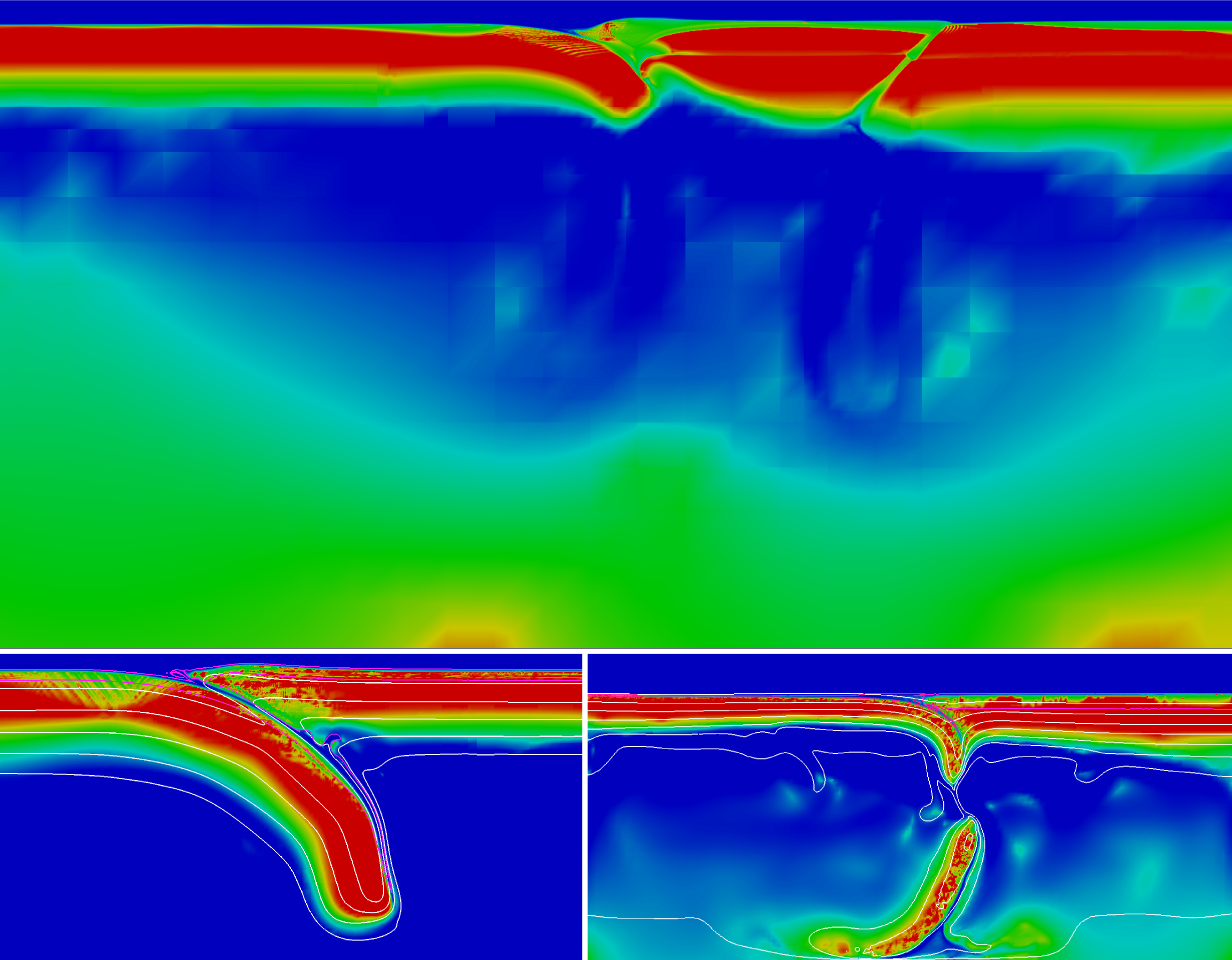Subduction of the lithosphere is one of the major processes occurring at plate boundaries and remains under extensive investigations due to its complex nature and hazards resulting from active deformation. Fraters (2014) applies the open source code ASPECT (Advanced Solver for Problems in Earth’s Convection) originally designed to study thermally driven convection to investigate the link between the crust and the upper mantle in these rheologically and dynamically complex zones. A thermo-mechanically coupled model has been constructed in the context of investigating Western Mediterranean subduction and rollback. The model contains four different materials: a crust for the subducting plate, a crust for the overriding plate, a mantle and a sticky air layer. Sticky air is a layer of low viscosity material on top of a model allowing for topography buildup without having to deform the grid. The extent of the lithosphere into the mantle is mainly defined by the temperature dependence of the rheology. The initial temperature within the model assumes an adiabatic temperature profile for the mantle, a linear temperature for the lithosphere, and a slab with a linear temperature which is heated as it descends into the mantle. The viscosity of the materials is defined by visco-plastic rheology using power-law creep and a Mohr-Coulomb criterion. The model contains a free-slip boundary condition at the bottom, an open boundary at the top and inflow/outflow velocity boundaries at the sides.
Many features used in this study were implemented in ASPECT as a plugin. Plugins allow ASPECT to be easily extended by adding functionality to the code without altering the code base. These features include plugins tailored for studying subduction zones implementing a basic subduction distribution for the composition field, an initial temperature distribution, local refinement definition, and many other improvements.
Subduction simulations were performed using ASPECT version 0.4 from December 2013 with custom adaptations and plugins. Two types of models where investigated, models with and without a weak zone in the overriding plate. The model without the weak zone required 11.5 days (33% of time used in the solver) on 116 processors to finish 50 Myr of simulation (30,110 cells). With a higher resolution model which included a weak zone it took 12.5 days to compute 10 Myr of evolution (82 of time use in the solver). This model was run only to 20 Myr due to its poor convergence, which was caused by a poor control on the
AMR. With new AMR plugins the convergence of such models has been dramatically improved. In light of recent advances in the code, computation times are expected to be substantially reduced in the current version (1.2) and next version.
Fraters, M.R.T. (2014), Thermo-mechanically coupled subduction modelling with ASPECT. Master’s thesis, Utrecht University, Utrecht, Netherlands, http://dspace.library.uu.nl/handle/1874/297347.

Results for the Western Mediterranean subduction modeling case study without weak zones. This model did not result in rollback of the subduction zone. Instead, as the model evolves through time the lithosphere subducts and necks detaching from the main body of the plate. Small-scale instabilities and convection cells at the bottom of the lithosphere are observed.